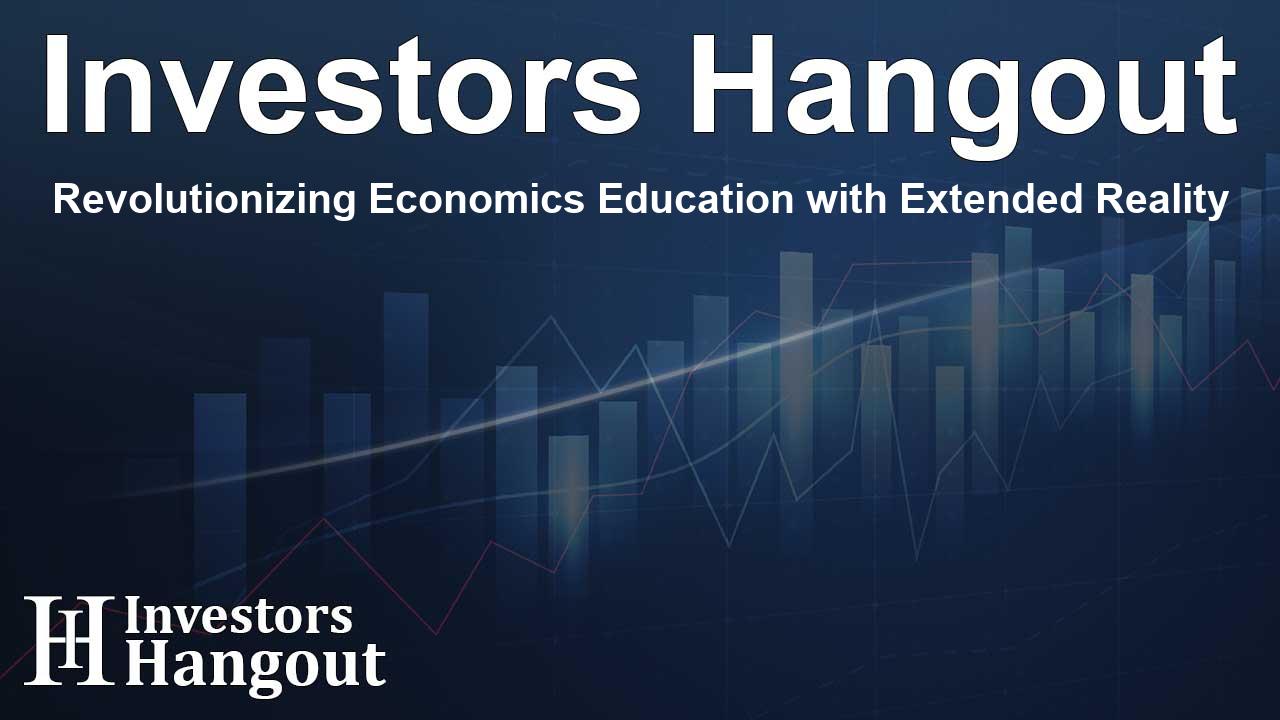Revolutionizing Economics Education with Extended Reality

Introduction to the FT Money Machine
The FT Money Machine is an innovative, immersive experience developed through a collaboration between Infosys and the Financial Times. This project builds upon the historical foundations of the Monetary National Income Analogue Computer (MONIAC), a remarkable piece of economic computing history designed by economist Bill Phillips. By utilizing Apple Vision Pro technology, the FT Money Machine offers a revolutionary way to engage with economic principles, making it an exciting educational tool for learners of all ages.
A New Approach to Learning Economics
The FT Money Machine aims to make economics education more accessible and impactful by harnessing the power of Extended Reality (XR). This interactive platform enables users to explore economic concepts through hands-on engagement, adhering to the 'learning by doing' philosophy. Students can recreate the original functionalities of the Moniac while experimenting with various economic scenarios in a gameplay format.
Interactive Features for Enhanced Learning
What sets the FT Money Machine apart is its ability to allow users to engage in free play. Users can adjust key economic variables, such as consumption, taxation, and investment, observing how these changes impact economic outcomes in real-time. Features like eye tracking, hand gestures, and voice commands create a seamless experience, enabling deeper insights into the intricate interactions within economic systems.
Academic Collaboration and Development
This project also benefits from the academic support of prestigious institutions such as the London School of Economics (LSE) and Cambridge University. Both schools contribute valuable expertise, with Cambridge housing one of the last working original Moniacs. This collaboration ensures the historical accuracy and educational integrity of the FT Money Machine.
The Significance of the FT Money Machine
James Lamont, Director of Strategic Partnerships at the Financial Times, articulates the project's importance by declaring it a groundbreaking venture that enhances the understanding of economics through innovation. By combining the Financial Times' mission with the technical expertise of Infosys, they aim to redefine economic education for the digital age.
Commitment to Education at Scale
Ashiss Kumar Dash, EVP and Global Head at Infosys, highlights the company's dedication to leveraging technology to create opportunities. The FT Money Machine exemplifies this commitment, merging historical learning methods with advanced digital tools. This project not only makes economic principles easier to understand but also invites users to actively participate in the learning process.
Integrating Technology and History
The interactive, three-dimensional interface of the FT Money Machine intends to transform traditional economics education. By offering a compelling hands-on learning experience, users can explore fundamental economic principles while gaining insights into complex topics that often pose challenges in conventional study environments. This breakthrough in educational technology not only makes learning enjoyable but also effective.
Celebrating Economic Innovation
In conjunction with the launch of the FT Money Machine, Infosys and the Financial Times will host a celebration at the London School of Economics. This event will shine a spotlight on the longstanding contributions of the Moniac to economic theory and its relevance in contemporary education.
About Infosys
Infosys remains at the forefront of digital transformation, serving clients across over 56 countries. With a workforce of over 300,000, the company is dedicated to enhancing human potential and leveraging modern technologies for business innovation. Infosys prides itself on its commitment to sustainability and diversity within its workforce, fostering an inclusive environment where talents can thrive.
Frequently Asked Questions
What is the FT Money Machine?
The FT Money Machine is an immersive XR experience that transforms how economics is taught and learned, allowing users to engage interactively with economic scenarios.
How does the FT Money Machine work?
Using advanced technology like eye tracking and voice commands, users can manipulate economic variables and observe the outcomes in real-time, facilitating a deeper understanding of economic systems.
Who developed the FT Money Machine?
Infosys collaborated with the Financial Times and received support from academic partners like the London School of Economics and Cambridge University to create this innovative educational tool.
Why is the FT Money Machine significant?
The FT Money Machine revitalizes a historical economic model, combining traditional learning methods with cutting-edge technology to make economics education more accessible and engaging.
What are Infosys's commitments?
Infosys is dedicated to leveraging technology to enhance human potential, drive sustainable practices, and foster diversity and inclusion within its workforce while helping clients navigate their digital transformations.
About Investors Hangout
Investors Hangout is a leading online stock forum for financial discussion and learning, offering a wide range of free tools and resources. It draws in traders of all levels, who exchange market knowledge, investigate trading tactics, and keep an eye on industry developments in real time. Featuring financial articles, stock message boards, quotes, charts, company profiles, and live news updates. Through cooperative learning and a wealth of informational resources, it helps users from novices creating their first portfolios to experts honing their techniques. Join Investors Hangout today: https://investorshangout.com/
Disclaimer: The content of this article is solely for general informational purposes only; it does not represent legal, financial, or investment advice. Investors Hangout does not offer financial advice; the author is not a licensed financial advisor. Consult a qualified advisor before making any financial or investment decisions based on this article. The author's interpretation of publicly available data shapes the opinions presented here; as a result, they should not be taken as advice to purchase, sell, or hold any securities mentioned or any other investments. The author does not guarantee the accuracy, completeness, or timeliness of any material, providing it "as is." Information and market conditions may change; past performance is not indicative of future outcomes. If any of the material offered here is inaccurate, please contact us for corrections.